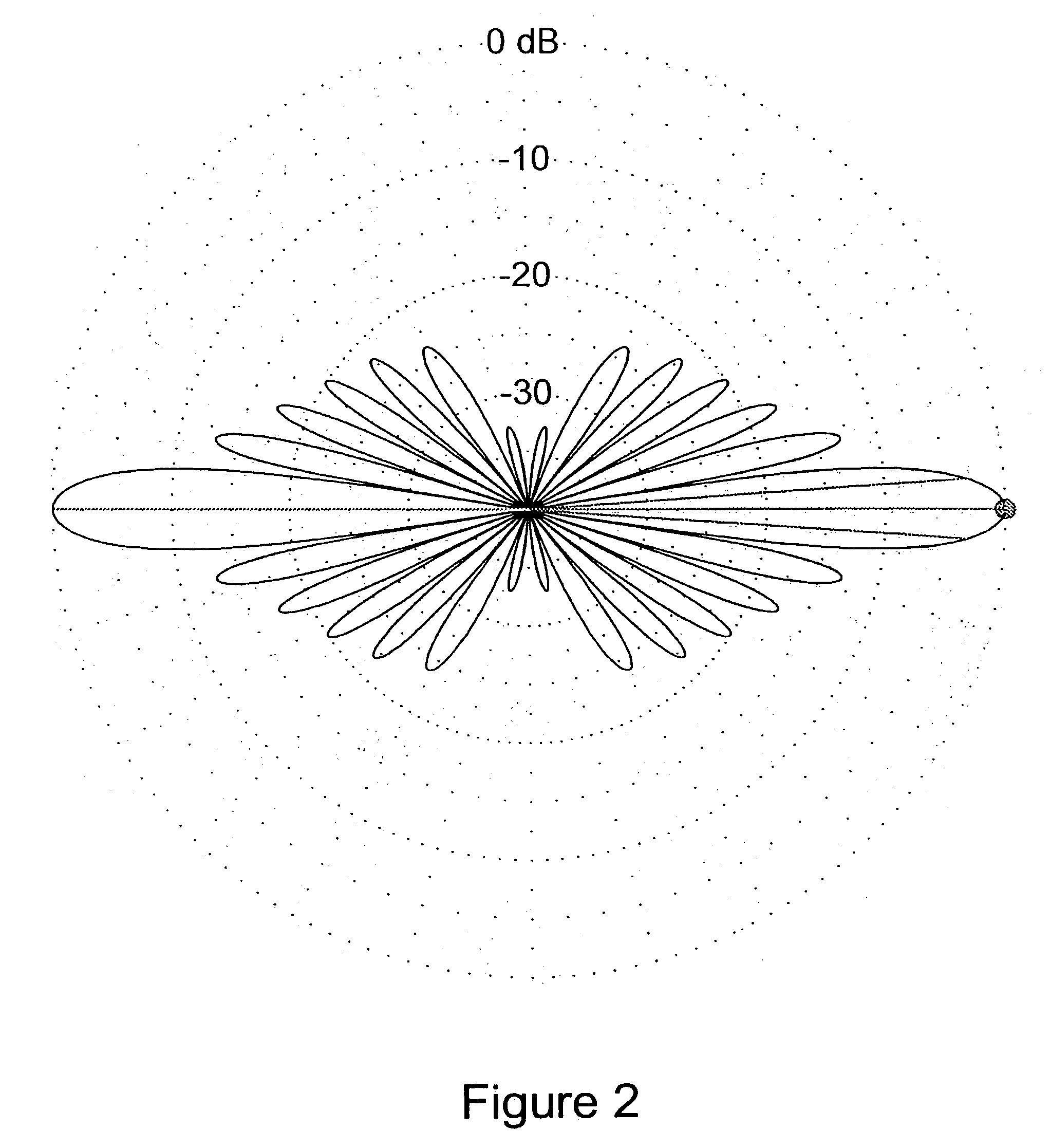Antenna system
a technology of antenna system and antenna, applied in the direction of antenna details, substation equipment, antennas, etc., can solve the problems of inability to produce auxiliary antenna patterns with no main lobe, inability to completely cancel sidelobes, and limited wireless network capacity
- Summary
- Abstract
- Description
- Claims
- Application Information
AI Technical Summary
Benefits of technology
Problems solved by technology
Method used
Image
Examples
Embodiment Construction
[0006] The exemplary embodiment provides, in a first aspect, an antenna system including a coverage antenna with a coverage beam pattern; and an auxiliary antenna with an auxiliary beam pattern, wherein said auxiliary beam pattern has a mainlobe with: [0007] a) an amplitude lower than an amplitude of a mainlobe of said coverage beam pattern; [0008] b) a width lower than a width of said mainlobe of said coverage beam pattern; [0009] c) a phase substantially opposite to a phase of a sidelobe of said coverage beam pattern; and [0010] d) a direction which is selected so as to at least partially suppress said sidelobe.
[0011] The exemplary embodiment provides, in a second aspect, an antenna system including a coverage antenna with a coverage beam pattern; an auxiliary antenna with an auxiliary beam pattern having a mainlobe with an amplitude, width, and direction selected so as to modify said coverage beam pattern; and a transmit / receive system for receiving uplink signals from said ante...
PUM
 Login to View More
Login to View More Abstract
Description
Claims
Application Information
 Login to View More
Login to View More - R&D
- Intellectual Property
- Life Sciences
- Materials
- Tech Scout
- Unparalleled Data Quality
- Higher Quality Content
- 60% Fewer Hallucinations
Browse by: Latest US Patents, China's latest patents, Technical Efficacy Thesaurus, Application Domain, Technology Topic, Popular Technical Reports.
© 2025 PatSnap. All rights reserved.Legal|Privacy policy|Modern Slavery Act Transparency Statement|Sitemap|About US| Contact US: help@patsnap.com



